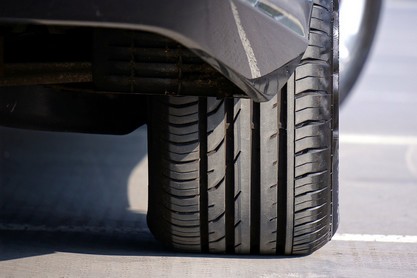
Your tyres bear the brunt of your driving, so it is important that you take correct care of them. With many drivers remaining unaware on just how to do this, we have created a simple guide on how to check and top-up your tyre pressure, as well as measure your tread depth.
Why is it important to check tyre pressure?
Your tyres hold up the entire weight of your vehicle, as well as anything inside it, so it is natural to find that they may have lost pressure over time. Because of this, you should assess their pressure at least once a month. Without awareness of their condition, you could risk danger on the road.
Your tyres are largely responsible for safe and accurate driving, turning, and braking, as well as the overall comfort of your driving experience. They can also ensure that you utilise less fuel by decreasing the resistance between your vehicle and the road.
How to check your tyre pressure
Tyres across different vehicles will require various pressures. Yours will be listed within your vehicle handbook or on a sticker on the inside of the driver door.
You will be able to inflate your tyres with a handpump, often found within the boot compartment, or an air pump at your local petrol station.
Step 1: Remove the dust cap from the tyre and place the pressure gauge onto the valve. You may need to screw this on until the sound of air stops.
Step 2: Take a look at the pressure reading displayed to determine whether your tyres need to be inflated in line with your vehicle guidelines.
Step 3: If they need inflating, pull the trigger to let air into your tyres. Keep an eye on the pressure reading to ensure you don’t over inflate.
Step 4: Once your tyres hold sufficient air pressure, unscrew and remove the pressure gage and return the dust cap to the valve.
You should repeat this action across all your tyres, including your spare if applicable.
Why is it important to measure tyre tread depth?
Across the UK and EU, the legal tyre tread depth limit is 1.6mm. This must be measured in all grooves across the entire circumference. Tyres which do not meet this limit risk causing danger on the road due to lack of grip and control on the ground. If you do experience an accident, any insurance claims will be invalidated if your vehicle has bald tyres. You could also be susceptible to receiving a fine up to £2,500 per bald tyre, as well as three points on your licence. If all four of your tyres don’t conform to the legal limit, this could result in a fine up to £10,000 and 12 points on your driving licence.
How to check tyre tread depth
Checking you tyre tread depth is quick and simple and can be carried out with the help of a handy 20p piece. Depending on the distance you drive, we would recommend carrying out this test every fortnight to ensure nothing changed over time.
Insert the 20p piece into every tread groove in your tyre. If the outer band of the coin remains visible, your tread has been worn down too much and will require a professional inspection. If the band gets hidden within your tyre grooves, your tyres and remain above the legal limit and are safe for driving.
Have you got a worry with your tyres? Perhaps you would like a professional, second opinion. Here at Bromley Vehicle Test Centre, we are on hand to ease your worries, returning your car to safe driving. Give us a call on 020 8460 6666 and we will be happy to book your vehicle in.
